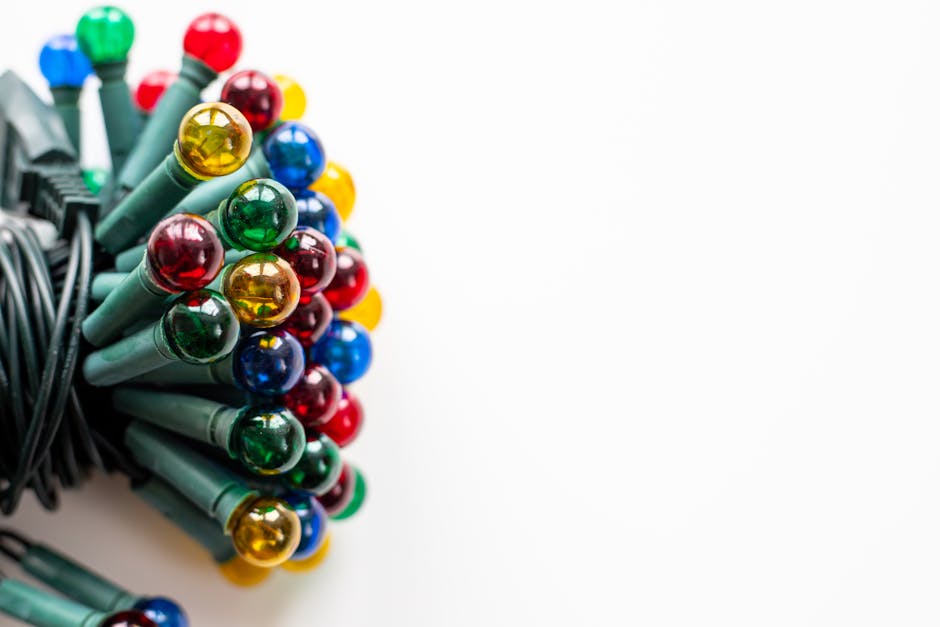Table of Contents
It’s 2025, and if you’re like me, maybe you’ve spent a fair bit of time scrolling through social feeds or news sites, and you’ve probably seen a gazillion ads. Some of them feel super specific, like they just know what you were looking at five minutes ago. A lot of that magic, or maybe it just feels like magic, comes down to something called responsive display ads, or RDAs for short, and the sneaky amount of automation happening behind the scenes. It’s not just a fancy term companies throw around; it really changes how these ads appear and who sees them.
Think about it this way: back in the day, if you wanted to put up a billboard, you’d design one image, print it, and stick it up. Everyone passing by saw the exact same thing. Online ads used to be a bit like that too – you’d make a static banner, and that was it. But with RDAs, it’s like having a whole team of designers and copywriters who can instantly whip up a fresh billboard for each person driving by, changing the picture, the words, maybe even the color, all based on who’s looking. That’s where automation steps in, doing all that crazy fast work that no human could ever manage on their own.
The Big Idea: Machines Doing the Mashing Up
So, how do responsive display ads use automation? Well, the core idea is pretty simple, even if the tech isn’t. You give the ad system a bunch of ingredients: maybe like five or six different headlines, a few different lines of descriptive text, ten or twenty pictures, and a couple of videos. Then, the automation takes over. It mixes and matches all those bits and pieces – the headlines, descriptions, images, and videos – to make tons of different ad combos. And I mean tons. We’re talking thousands, even millions of possible variations from a relatively small pile of assets.
It’s actually kinda cool how it happens. Imagine you’re building a LEGO set, but instead of following instructions, you just dump all your bricks out, and a robot starts snapping them together in every possible way until it finds the ones that look best. That’s essentially what the automation does with your ad ingredients. It’s not just randomly throwing things together, though. It’s got a brain, or an algorithm, that learns which combinations perform best. So, some headline paired with a specific picture might grab more attention from people interested in, say, running shoes, while another pairing works better for folks looking for new headphones.
Beyond Just Mixing: Smart Delivery to the Right Folks
The mixing and matching is only one part of the story. The next bit, and it’s a really important one, is how responsive display ads use automation to figure out who should see which ad version. This isn’t just about showing your ad to anyone who happens to be online. The systems are pretty smart about audience targeting.
What’s interesting is how these systems look at a person’s online behavior. Are they visiting certain types of websites? Have they recently searched for something specific? What kind of videos do they watch? All this info, anonymized of course, gets crunched. Then, the automation tries to match the perfect ad combo (from all those variations it made) to that specific person. If someone’s been looking at travel blogs about beach vacations, the system might automatically serve them an RDA with a sunny beach picture and a headline about “Escape to Paradise,” because it knows that combination has worked well for similar people. And it might be totally different from the ad someone else, who’s been looking for winter coats, sees. It just happens, automatically, in real-time, in milliseconds.
I mean, can you imagine trying to do that by hand? You’d need an army of ad managers watching every single internet user, trying to figure out which ad to show them. It’s just not practical. So, the automation here takes away that huge, impossible task, making sure the right ad, or at least a highly relevant ad, gets to the right eyeballs.
Bidding and Budget, All on Autopilot
Another huge piece of how responsive display ads use automation is in managing the money part – the bidding. For a long time, advertisers had to set bids manually, saying, “I’ll pay this much for a click on this ad, and that much for an impression over there.” It was a lot of guessing and checking. Now, with automation, it’s way more dynamic.
The ad platforms have these super clever bidding strategies. You basically tell the system what your goal is – like, “I want to get as many sales as possible within my budget,” or “I want to get the most clicks for my money.” Then, the automation takes over. It looks at millions of signals in real-time: the time of day, the specific website, the device someone’s using (phone versus laptop), even their location. It then automatically adjusts how much to bid for that specific ad impression to try and hit your goal.
So, if the system thinks there’s a really good chance a particular person on a particular website at 3 PM on a Tuesday is going to click your ad and maybe even buy something, it might bid a bit higher for that impression. But if it’s a less promising situation, it might bid lower. It’s not just one bid; it’s like thousands of tiny, micro-bids happening every second. This means your budget gets spent way more efficiently, chasing the opportunities that are most likely to pay off, rather than just blasting your ads everywhere equally. It’s like having a financial advisor who knows exactly when to invest a penny more or a penny less to get you the best returns, moment by moment. That’s a tough gig for a human, right?
Constant Learning and Tweaking
Maybe the most impressive thing about how responsive display ads use automation is their ability to learn and get better over time. It’s not a “set it and forget it” kind of deal, although sometimes it feels a bit like that for advertisers. The system is always watching. It keeps track of which headline-image-description combos are getting the most clicks, which ones are leading to purchases, and which ones people just scroll past.
Based on all this data – and there’s a massive amount of data being crunched – the automation then starts to prioritize the better-performing combinations. It’ll show the top-performing versions more often. And, what’s even cooler, it might start to figure out why certain combos work. Maybe it’s the bright colors in one picture, or a specific word in a headline. It’s constantly testing, learning, and making tiny adjustments to show the best possible ad to the best possible person at the best possible moment.
It’s basically a non-stop A/B test, but on a scale that’s just mind-boggling. You don’t have to manually create 20 different ad variations, run them for a week, analyze the results, and then create new ones. The automation does all that in the background, all the time. For someone running a small business, or even a big one, this means you can focus on the bigger picture stuff, like what new products to launch or how to talk about your brand, instead of obsessing over which ad font is getting an extra click. It’s a huge shift in how marketing gets done.
Practical Takeaways for Folks Using RDAs
So, with all this automation humming away, what does that mean for someone who’s actually trying to run ads? It means your job shifts a bit. Instead of being the one pulling all the levers, you become more of a strategist and a creative director.
You still need to give the automation good stuff to work with. If you feed it blurry pictures and boring headlines, even the smartest AI isn’t going to turn that into gold. So, put in the effort to get high-quality images, catchy headlines, and strong descriptions. The more good ingredients you provide, the better the automation can do its job.
Also, it’s not truly “fire and forget.” You still need to keep an eye on the bigger trends, what your competitors are doing, and if your overall ad spend is bringing in the right results. Sometimes, you might see that certain ad categories just aren’t working, no matter how much automation is doing its thing. That’s when you step in and maybe try a totally different angle or re-think your audience. What I’ve learned is that automation is a powerful tool, but it doesn’t replace human thought entirely, especially when it comes to the initial ideas and the big-picture planning.
A Few Questions About How Responsive Display Ads Use Automation
Sometimes it’s clearer if we just get to the point, right? So, here are some common things people wonder about:
How do responsive display ads use automation to decide which specific ad variation to show? Basically, the system uses algorithms that look at a user’s behavior, demographics, and real-time context (like where they are, what time it is, what website they’re on). It compares this to historical data about which ad combinations performed best for similar users in similar situations, then picks the one it thinks will get the most engagement or conversion. It’s like a super-fast, continuous guessing game, but with a lot of data backing it up.
How do responsive display ads use automation to optimize my ad budget? The automation handles “smart bidding.” You set a goal (e.g., maximize clicks, maximize conversions), and the system automatically adjusts bids for each ad impression in real-time. It bids more for impressions that are likely to result in your goal, and less for those that aren’t, making your spending more efficient without you having to manually tweak bids all the time.
How do responsive display ads use automation to improve over time? It’s always learning. The automation continuously tracks the performance of all the different ad combinations. It notes which headlines, images, and descriptions work well together for different audiences. Over time, it prioritizes showing the higher-performing combinations more often, effectively teaching itself what resonates best with various user segments. It’s like a never-ending cycle of trial and error, but it’s all happening in the background.
How do responsive display ads use automation for audience targeting? It analyzes user data (like browsing history, search queries, interests) and then serves ad combinations that have previously performed well for users with similar profiles. This helps ensure that the ad content is relevant to the person seeing it, even if the advertiser hasn’t manually set up super specific audience segments for every single ad.
What are the main benefits for advertisers now that responsive display ads use automation so heavily? The biggest perks are definitely saving a ton of time on manual ad creation and management. You get more ad variations tested automatically, better targeting of your audience, and more efficient spending of your ad budget. It means advertisers can focus more on the creative side and overall strategy, rather than getting lost in the weeds of constant optimization.
It really feels like we’re just scratching the surface with this stuff. The way responsive display ads use automation isn’t static; it keeps getting smarter. As more data piles up and the algorithms get even more sophisticated, I believe these ads will become even more personalized, maybe even predicting what you’ll want before you even know it yourself. The future of online advertising seems less about shouting at everyone and more about whispering the right message to the right person. And that’s pretty wild to think about, isn’t it?












